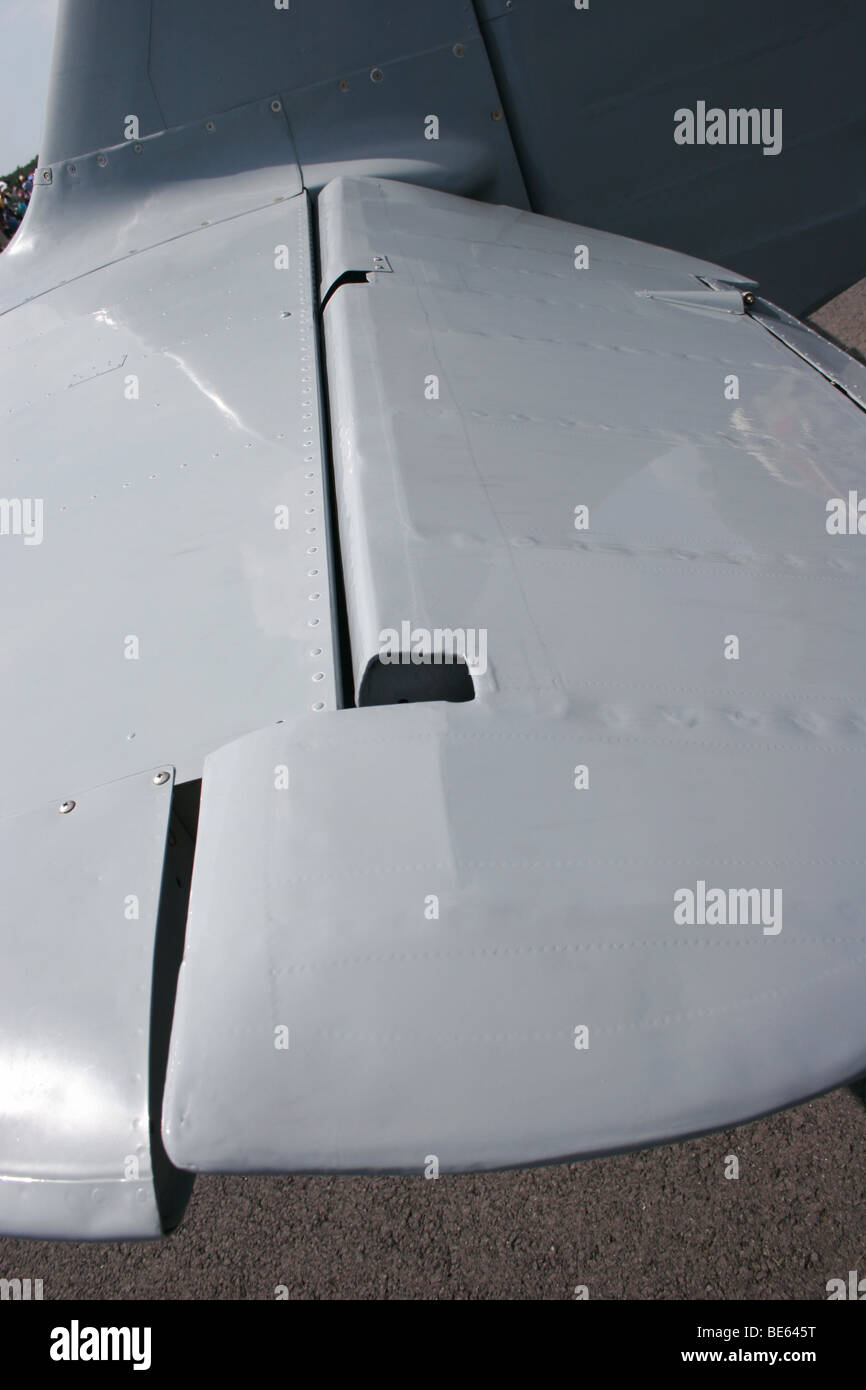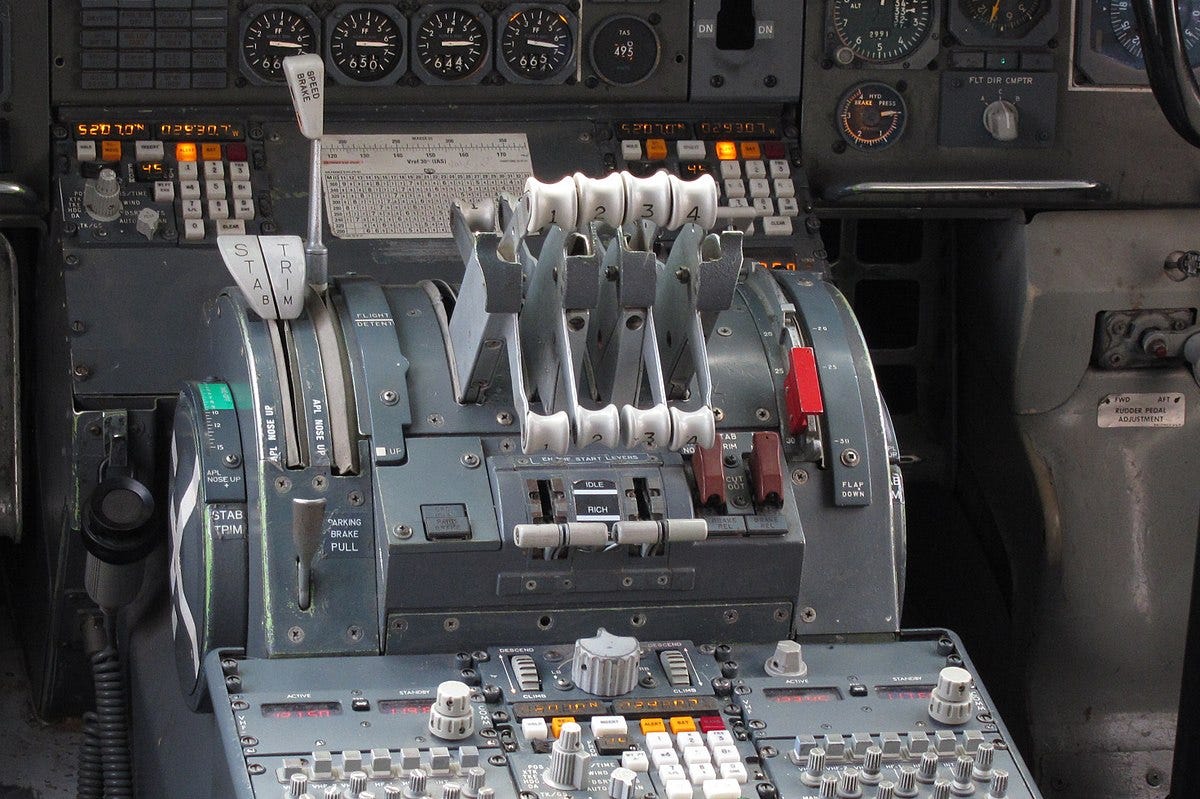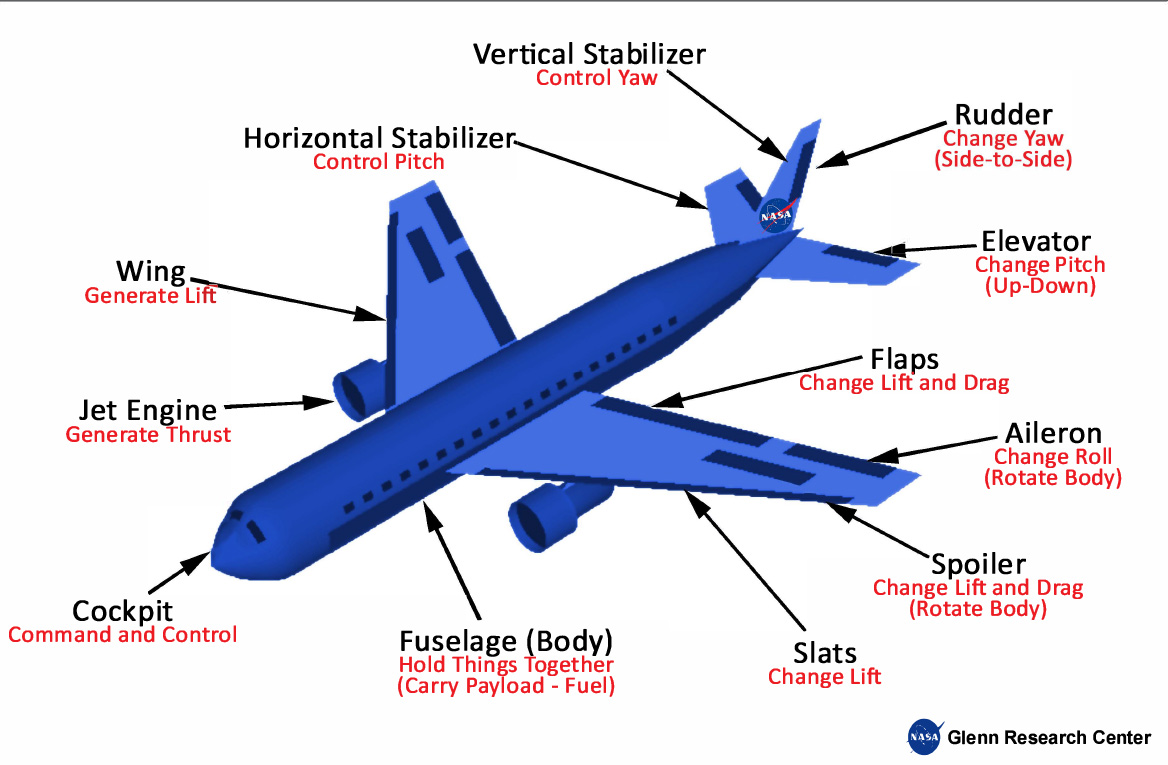Elevator Aircraft - It provides stability and control in longitudinal (pitch) and/or direction (yaw). Stabilizers can be fixed or adjustable structures by which the control surfaces can be moved. Or it could be a movable surface such as a stabilizer depending on the context. Sometimes "stabilizers" only refer to the front end of the overall surface.
In a controlled aircraft configuration The vertical (fin) and horizontal (tail plane) stabilizers are separated from the tail of the aircraft. Other arrangements, such as the V-tail configuration, stabilization properties lead to a combination of stability and longitudinal and directional control.
Elevator Aircraft

Longitudinal stability and control can be obtained with other wing configurations. including canards, tandem wings and tailless aircraft
Detail Of Tail Section On Small Aircraft Showing Various Elevator Types On The Horizontal Stabilizer Stock Photo
Some aircraft are stabilized by electronic flight controls. In this case, a fixed, movable surface located anywhere along the plane can act as a damper or motion stabilizer.
The Boeing 737 uses a jack-operated adjustable stabilizer system. to create the required pitch cutting force The picture shows the stabilizer Geric.
It exerts a force vertically at a distance so that the sum of the distances approximates the center of gravity.
The vertical force exerted by the stabilizer varies depending on flight conditions. It mainly depends on the aircraft's lift coefficient and wing deflection. This may affect the location of the pressure drop. and the position of the aircraft's gravity (which changes with the aircraft), load and fuel consumption). Transsonic flight places special requirements on horizontal stabilizers. when the local velocity of air over the wing reaches the velocity of sound The pressure will move suddenly.
Plane Maker Manual
Another role of the horizontal stabilizer is to provide longitudinal stability. Balancing can only occur when the car is cut off.
It shows the tdcy of the plane that returns to good condition if disturbed.
This maintains the aircraft's attitude constant with its pitch angle unchanged relative to the airflow. without pilot input The constant stability of an aircraft with adjustable wings requires that the plane controls gravity before pressure. Therefore, the stabilizer at the aft position creates lift in the downward direction.

The elevator controls the pitch axis. in the case of a fully mobile tail The rubber assembly acts as a control surface.
Rc Aerobatics: Fly The Elevator
The ebb and flow flushing involved in generating lift is the source of the aerodynamic interactions between the wing and stabilizer bar. This translates into a change in the effective angle of impact for each surface. The wing-to-tail effect is more important than the opposite effect. and can be modeled using Prandtl's superscript theory; However, the evaluation of interactions between surfaces Accurately requires computer simulation or wind tunnel testing.
In a convtional configuration, a horizontal stabilizer is a small horizontal tail, or fuselage tail, located at the rear of the aircraft. This is a typical configuration.
In most planes The aircraft tail assembly consists of a fixed surface attached to the rear lift surface. Trim tabs can be used to reduce pilot feed. Alternatively, some light aircraft, such as the Piper PA-24 Comanche and Piper PA-28 Cherokee, have a full motion protection system known as a buoyancy aid. without a separate elevator Stabilizers are also found in many supersonic aircraft. where separate control of the lift results in unacceptable drag.
Most planes and transport aircraft have a slow-moving tail that is combined with a non-moving elevator. The elevator is controlled by a pilot or autopilot. and is mainly used to change the attitude of the aircraft. while all components are used for trimming (maintains a constant balance horizontally) and stabilizes the plane on the pitch axis. On the Boeing 737, the adjustable stabilizer is powered by an electrically operated jack.
U.s. Navy Aircraft History: Why 27 Feet 6 Inches? Redux
Tri-surface aircraft, such as the Piaggio P.180 Avanti or Scaled Composites Triumph and Catbird, have a stabilizer tail like normal aircraft. The front plane, known as the foreplane or canard, provides lift and acts as a balanced surface.
Some of the earlier trio, such as the Curtiss AEA June Bug or the 1907 Voisin biplane, had a conventional layout with an additional forward pitch control surface known as the "lift" or sometimes called the "lift".
Lack of lift The tail planes of these planes are not what's known as a stabilizer. Voisin, for example, has a tandem lift system. (main and hind wings) with unstable front planes or predominantly lifted This is called "équilibreur" ("balancer")

In the canard configuration The smaller wing, or front plane, is located in front of the main wing. Some authors call it a sonnet.
Phak Chapter 6 9 T Tail
In naturally unstable aircraft The canard surface can be used as an active part of the artificial stabilization system. and sometimes called horizontal stabilizer
Tailless aircraft does not have a separate horizontal stabilizer. in a tailless aircraft The horizontal stabilization surface is part of the main wing.
Longitudinal stability in tailless aircraft is achieved by designing the aircraft in such a way that the aerodynamic forces are behind the anti-gravity forces. This is done quickly by changing the design of the wings, for example by changing the angle of incidence in a wide direction. (flush or twisted wing) or by using a reflex windshield.
A vertical stabilizer provides directional (or yaw) stability and usually consists of a fixed fin and a movable control rudder on the trailing edge.
What Do Elevator, Rudder, Spoilers Do?
There are generally no hinges and all fin surfaces rotate for stability and control.
When the plane collides with the wind horizontally The stability of the yaw will cause the aircraft to turn in the wind. instead of turning in the same direction
The geometry of the fuselage aircraft fuselage and a rotating propeller All affect the lateral stability. and affects the required stabilizer dosage.
Not all aircraft have vertical stabilizers. But wing sweep and dihedral can provide stability in the same direction. while maneuvering is usually done by increasing the drag on the sides of the aircraft. The plane will turn in the form of a spoiler or split wing.
File:light Aircraft Elevator And Trim Tab.jpg
Although using a vertical stabilizer is the most commonly used method. But it is possible to achieve directional stability without using a modular vertical stabilizer. This happens when the wings are thrown backwards and in some cases, such as the Rogallo's wing used for gliders. This means no fins are required.
In some aircraft Both horizontal and vertical stabilizers are combined into a double surface known as a V-tail. In this arrangement, two stabilizers are installed. (fin and rudder) at 90-120 ° each other.
It provides a wider horizontal projection area than vertical, like most conventional tails. The motion control surface is called the rudder.
Although the V-tail configuration may result in a significant reduction in wet tail area. But it's affected by the complexity of the controls.
How Does An Elevator Work In An Aircraft?
Another common configuration exists. The Geral Atomics MQ-1 Predator drone has an inverted V-tail. The Lockheed XFV's tail surface can be described as a V-tail with its surface extending through the fuselage to the opposite side. LearAvia Lear Fan having a Y tail. The whole tail arrangement with a dihedral angle of the tail provides a combination of longitudinal and directional stability. This article to learn more information for review. Please help improve this article by adding citations to trusted sources. Unsourced content may be challenged and removed. Search source: "Tailplane" – News · Newspaper · Book · Academic · JSTOR (December 2007 ) (Learn how to delete this template text.)
A tailplane, also known as a horizontal stabilizer, is a small raised surface located in the tail (emnage) behind the main lift surface of fixed-wing aircraft, as in other fixed-wing aircraft such as helicopters and airplanes. gyroplane Not all fixed-wing aircraft have a tail. and fixed-wing aircraft do not have a separate tail plane. While in the V-tail plane, the vertical stabilizer, rudder, and tail plane and elevator combine to form two diagonal surfaces in the V-arrangement.
The function of the tail is to provide stability and control. especially The end plane allows adaptation for changes in the position of the pressure center or center of gravity caused by changes in velocity and attitude. fuel consumption or the release of cargo or load

The tail of the aircraft consists of a fixed horizontal stabilizer attached to the tail and a movable elevator. In addition to the form Also featured:
Parts Of The Aircraft
Wings with a typical aerofoil profile negatively affect longitudinal stability. This means that there is a disturbance (such as a gust of wind) that raises the nose and causes the nose-raising moment. which is equivalent to raising the nose even higher when there is the same disturbance The presence of the tail of the aircraft caused the moment of tilting the nose down. This can counteract the instability of the wing's nature and give the plane longitudinal stability (in many respects the weather vane always points to the wind).
The longitudinal stability of the aircraft can be changed when flying "let go"; e.g. when flight control is under aerodynamic forces but no pilot feed.
In addition to giving back The end plane also provides damping.
Aircraft elevator design, elevator repair, elevator maintenance, function of elevator in aircraft, elevator modernization, elevator definition aircraft, aircraft elevator control, aircraft elevator control system, elevator of aircraft, aircraft elevator, aircraft carrier elevator, aircraft carrier elevator dimensions
